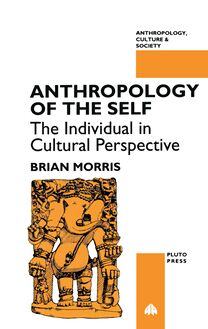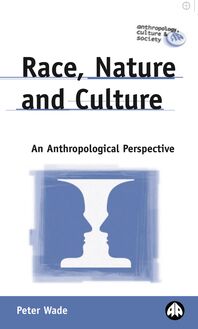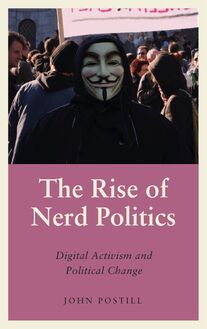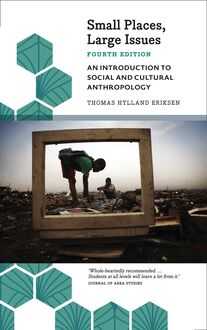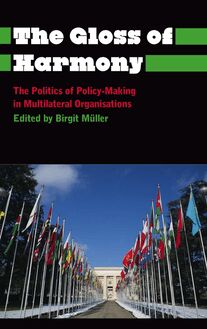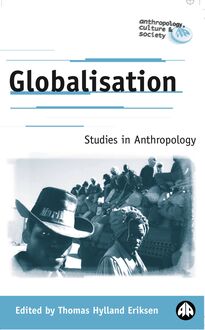-
 Univers
Univers
-
 Ebooks
Ebooks
-
 Livres audio
Livres audio
-
 Presse
Presse
-
 Podcasts
Podcasts
-
 BD
BD
-
 Documents
Documents
-
- Cours
- Révisions
- Ressources pédagogiques
- Sciences de l’éducation
- Manuels scolaires
- Langues
- Travaux de classe
- Annales de BEP
- Etudes supérieures
- Maternelle et primaire
- Fiches de lecture
- Orientation scolaire
- Méthodologie
- Corrigés de devoir
- Annales d’examens et concours
- Annales du bac
- Annales du brevet
- Rapports de stage
La lecture à portée de main
270 pages
English
Découvre YouScribe en t'inscrivant gratuitement
Je m'inscrisDécouvre YouScribe en t'inscrivant gratuitement
Je m'inscris
Obtenez un accès à la bibliothèque pour le consulter en ligne
En savoir plus
En savoir plus
270 pages
English
Obtenez un accès à la bibliothèque pour le consulter en ligne
En savoir plus
En savoir plus

Description
This book looks at the concept of risk from a cross-cultural perspective, the contributors challenge the Eurocentric frameworks within which notions of risk are more commonly considered.
They argue that perceptions of danger, and sources of anxiety, are far more socially and culturally constructed - and far more contingent - than risk theorists generally admit. Topics covered include prostitutes in London; AIDS in Tanzania; the cease-fire in Northern Ireland; the volcanic eruptions in Montserrat; modernisation in Amazonia; and the BSE scare in Britain.
1. Introduction: Risk Revisited by Pat Caplan
2. The Politics of Risk among London Prostitutes by Sophie Day
3. Risk and Trust: Unsafe Sex, Gender and AIDS in Tanzania by Janet Bujra
4. Conflicting Models of Risk: Clinical Genetics and British Pakistanis by Alison Shaw
5. Risk-talk: the Politics of Risk and its Representation by Penny Vera-Sanso
6. A Risky Cease-fire: British Infantry Soldiers and Northern Ireland by Paul Killworth
7. The Eruption of Chances Peak: Montserrat, and the Narrative Containment of Risk by Jonathan Skinner
8. 'Eating British Beef with Confidence': A Consideration of Consumers' Responses to BSE in Britain by Pat Caplan
9. Risk, ambiguity and the loss of control: how people with chronic illness experience complex biomedical causal models by Simon Cohn
10. Good Risk, Bad risk: Reflexive Modernisation and Amazonia by Stephen Nugent
Contributors
Index
They argue that perceptions of danger, and sources of anxiety, are far more socially and culturally constructed - and far more contingent - than risk theorists generally admit. Topics covered include prostitutes in London; AIDS in Tanzania; the cease-fire in Northern Ireland; the volcanic eruptions in Montserrat; modernisation in Amazonia; and the BSE scare in Britain.
1. Introduction: Risk Revisited by Pat Caplan
2. The Politics of Risk among London Prostitutes by Sophie Day
3. Risk and Trust: Unsafe Sex, Gender and AIDS in Tanzania by Janet Bujra
4. Conflicting Models of Risk: Clinical Genetics and British Pakistanis by Alison Shaw
5. Risk-talk: the Politics of Risk and its Representation by Penny Vera-Sanso
6. A Risky Cease-fire: British Infantry Soldiers and Northern Ireland by Paul Killworth
7. The Eruption of Chances Peak: Montserrat, and the Narrative Containment of Risk by Jonathan Skinner
8. 'Eating British Beef with Confidence': A Consideration of Consumers' Responses to BSE in Britain by Pat Caplan
9. Risk, ambiguity and the loss of control: how people with chronic illness experience complex biomedical causal models by Simon Cohn
10. Good Risk, Bad risk: Reflexive Modernisation and Amazonia by Stephen Nugent
Contributors
Index
Sujets
Informations
| Publié par | Pluto Press |
| Date de parution | 20 février 2000 |
| Nombre de lectures | 0 |
| EAN13 | 9781849640473 |
| Langue | English |
| Poids de l'ouvrage | 1 Mo |
Informations légales : prix de location à la page 0,6250€. Cette information est donnée uniquement à titre indicatif conformément à la législation en vigueur.
Extrait
RISK REVISITED
EDITED BY PATCAPLAN
P Pluto Press LONDON • STERLING, VIRGINIA
First published 2000 by Pluto Press 345 Archway Road, London N6 5AA and 22883 Quicksilver Drive, Sterling, VA 20166–2012, USA
Copyright © Pat Caplan 2000
The right of the individual contributors to be identified as the authors of this work has been asserted by them in accordance with the Copyright, Designs and Patents Act 1988.
British Library Cataloguing in Publication Data A catalogue record for this book is available from the British Library
ISBN 0 7453 1468 6 hbk
Library of Congress Cataloging in Publication Data Risk revisited / edited by Pat Caplan. p. cm.—(Anthropology, culture, and society) Includes bibliographical references and index. ISBN 0–7453–1468–6 1. Risk—Sociological aspects. 2. Risk perception. 3. Risk perception—Cross-cultural studies. I. Caplan, Patricia. II. Series.
HM1101.R59 2000 302'12—dc21
99–048076
Designed and produced for Pluto Press by Chase Production Services, Chadlington, OX7 3LN Typeset from disk by Stanford DTP Services, Northampton Printed in the European Union by TJ International, Padstow
CONTENTS
Lists of Figures and Tables Acknowledgements
Introduction: Risk Revisited Pat Caplan 1. The Politics of Risk among London Prostitutes Sophie Day 2. Risk and Trust: Unsafe Sex, Gender and AIDS in Tanzania Janet Bujra 3. ‘Conflicting Models of Risk’: Clinical Genetics and British Pakistanis Alison Shaw 4. Risk-talk: the Politics of Risk and its Representation Penny Vera-Sanso 5. A Risky Cease-fire: British Infantry Soldiers and Northern Ireland Paul Killworth 6. The Eruption of Chances Peak, Montserrat, and the Narrative Containment of Risk Jonathan Skinner 7. ‘Eating British Beef with Confidence’: A Consideration of Consumers’ Responses to BSE in Britain Pat Caplan
vii viii
1
29
59
85
108
133
156
184
viRisk Revisited 8. Risk, Ambiguity and the Loss of Control: How People with a Chronic Illness Experience Complex Biomedical Causal Models 204 Simon Cohn 9. Good Risk, Bad Risk: Reflexive Modernisation and Amazonia 226 Stephen Nugent
Contributors Index
249 251
LIST OF FIGURES AND TABLES
FIGURES
Figure 5.1 Figure 5.2
Figure 6.1 Figure 6.2
TABLES
Table 4.1 Table 5.1
Table 5.2
A unit in a Northern Ireland ‘orbat’. An incident in Northern Ireland, from a sketch by an informant Chances Peak Shirley icing a wedding cake
136
138 172 173
Attribution of risk and blame and its consequences 121 Paramilitary incidents in Northern Ireland, 1969–94 142 Security force casualties in Northern Ireland, 1969–94 143
vii
ACKNOWLEDGEMENTS
I am grateful to the people who gave seminars in the ‘Risk Revisited’ series at Goldsmiths College in the autumn of 1997, and who have provided chapters for this volume, including bearing my editing with patience. In addition, thanks are due to speakers in the series who were not able to contribute to this volume: Anthony Giddens, Scott Lash, Peter Kelly and Suzanne Hood. I also thank those who joined the project subsequently and wrote articles at relatively short notice: Alison Shaw and Simon Cohn. Those who attended the seminar series and joined in the discussion have also played an important role in the genesis of this collection. I also wish to thank Lionel Caplan for giving much encouragement and for commenting on several drafts of the introduction. Practical help with the manuscript was provided by Imelda McGowan and Shefa Jahan, for which I am grateful. It has been a pleasure to work with the team at Pluto, including Richard Wilson as series editor and Anne Beech as Editorial Director, and I am also grateful to their reviewer for incisive comments.
viii
Pat Caplan July 1999
INTRODUCTION: RISK REVISITED Pat Caplan
At the turn of the century and the millennium, risk is a topic which is impossible to ignore. As I complete this manuscript, there are con-frontations, sometimes violent, over genetically modified crops and other forms of biotechnology, and media discussions on the increasing predilections for engaging in ‘risky’ sports, and on the relative risks of accepting, in certain parts of the world, high levels of pollution in order to generate jobs. Risk is highly politicised, and the politicians constantly invoke science in their attempts to persuade the public that their policies are safe. I became interested in the topic of risk while conducting research in Britain on people’s eating habits in the early 1990s, a period which had seen a rash of food ‘scares’ around salmonella in eggs, listeria in cheese, and the dangers of ‘mad cow disease’. The diversity of reactions by informants to the range of risks with which eating appeared to present them – ranging from coronary heart disease to CJD – needed complex explanations. In the autumn term 1997, I convened a seminar series entitled ‘Risk Revisited’ for the Department of Anthropology at Goldsmiths College, inviting the contributors to reflect particularly on how their own research relates to existing work on risk perception by anthropologists and sociologists. Most of the chapters in this book were given in early draft form at that seminar.
RISK: THE DEBATES
In this section, I consider the work of three prominent social scientists who have written extensively on risk: the anthropologist, Mary 1
2Risk Revisited Douglas, who first published on risk (with Aaron Wildavsky) in 1982, and two sociologists, Ulrich Beck, whose bookRisikogesellschaft appeared in 1986, and in English in 1992, and Anthony Giddens who publishedModernity and Self-Identityin 1991. In spite of the fact that they are writing on the same topic, there is relatively little dialogue between them. Neither the work of Beck nor Giddens was available to Douglas when writing her first two volumes on risk (1982, 1986), but she does refer to Beck’s work briefly (and approvingly) in her 1992 volume. Beck and Giddens, however, only note in passing the work of Douglas, which is perhaps somewhat curious, and an issue which will be discussed below. What all three authors have in common is their interest in modern (in its various meanings) societies, and their desire to engage in dialogue with others outside of their own discipline. All wish to see their discipline used for socially useful purposes, indeed, all three believe that their work not only asks interesting questions, but even provides some answers. While such a stance has a long tradition within sociology, it has historically been much more contested in British social anthropology, which had until recently tended to display hostility towards, even contempt for ‘applied’ work. Indeed, Douglas’s early forays into studies of Western society and into contemporary issues of policy were regarded by the discipline as fairly heretical back in the 1960s (Fardon, 1999, p. xiv).
The view from sociology: Beck and Giddens
The sociologists who write on risk tend to be interested not only in seeking universally applicable theories, but also theories which are about the universalising tendencies of globalisation. The writings of Beck and Giddens, the two most widely quoted social theorists on risk, have much in common, although originally they appear to have worked quite independently. Ulrich Beck’s bookRisk Society(1992 [1986]) has been enormously influential. He sees risk as having increased: ‘[I]n the course of the exponentially growing productive forces in the modernization process, hazards and potential threats have been unleashed to an extent previously unknown’ (p. 19). He notes that risks have always been present in human history, but he argues that the nature of risk is qual-
Introduction: Risk Revisited3 itatively different today for several reasons. One is that modern risks are typically invisible, located in the spheres of physics and chemistry. A second is that they have their basis in industrial overproduction. For Beck, then, risk may be defined as ‘a systematic way of dealing with hazards and insecurities induced and introduced by moderniza-tion itself’ (1991, p. 21). The third difference between modern risks and the dangers of the past is that the former jeopardise all forms of life on earth, so that along with the growing capacity of technologies comes the incalculability of their consequences, which themselves come to be a dominant force in history and society. All of this has resulted in a new paradigm, that ofrisk society, a new stage of modernity. Beck acknowledges that some people are more affected than others by the distribution of risks or ‘bads’: ‘social risk positions spring up’ (p. 23), which are not necessarily the same as the old divisions of class or region. For this reason, he contends, ‘risk society in this sense is a world risk society’ (ibid.). To some extent, risks continue to adhere to class patterns, given the correlation between extreme poverty and extreme risk; furthermore, in the new global order, some risks, such as those caused by hazardous industries, are transferred away from the developed countries to the Third World. However, although the wealthy can attempt to buy their way out of risk, such possibilities inevitably shrink with the intensification of risk position: the same air and water are consumed by everyone, or, as Beck puts it ‘smog is democratic’ (p. 36) and risk thus equalises. This is another of the con-tradictions which potentially allows for change. Thus while Beck sees risk society as a catastrophic society, he contends that this factor has political potential since ‘averting and managing these can include a reorganisation of power and authority’(p. 4). Beck suggests that the debates around these issues are still being conducted in terms of natural science, but this is now inappropriate. Indeed, the continuation of an uncritical acceptance of the claims of science means that, all too often, people, society and culture are ignored. However, in discussions on risk, there is no scientific monopoly, since there is rarely expert agreement either on what constitutes acceptable risk, or on how it may be managed; as a result public criticism and disquiet increase. At the same time, because of the degree of interdependence of the highly specialised agents of mod-ernisation in business, agriculture, the law and politics, there is no
4Risk Revisited single agent responsible for any risk : ‘there is a general complicity, and the complicity is matched by a general lack of responsibility. Everyone is causeandeffect’ (p. 33) and so ‘perpetrator and victim become identical’ (p. 38). The extent to which people are endangered by these risks is to some extent dependent upon knowledge, a knowledge which frequently the victims themselves do not have. For this reason, Beck suggests, the ‘quality of life and the production of knowledge are locked together’ (p. 55). But in recent years, there has been increasing interest in and awareness of the forms of knowledge necessary to challenge acceptance of hazards generated by moderni-sation. Knowledge of risks gains a new significance, and brings about another major change: ‘whereas in class and stratification positions being determines consciousness, in risk positionsconsciousness determines being’ (ibid.). In short, then, Beck’s argument is that environmental problems are not those of surroundings, but areproblems of people,they aresocial problems. Furthermore, the old antithesis between nature and society no longer exists, since ‘At the end of the twentieth century natureis society and society is also “nature” ’ (p. 81). In the second part of his book, Beck considers the processes of indi-vidualisation which are happening simultaneously with the growth of risk society. As a result of these, problems of the system are often transformed into apparent personal failure. But at the same time, out of these processes, new social movements are born, which are both the expressions of a search for social and personal identity and also of protest against the new forms of control being established, often in the name of risk management. Finally, Beck looks at the idea ofreflexive modernisationin the course of which ‘socially prescribed biography is transformed into biography that is self-produced and continues to be produced’ (p. 135). In reflexive modernisation, individuals are no longer willing to accept the truth claims of scientific knowledge, but subject them to criticism. In this way ‘The “objects” of scientization also becomesubjectsof it, in the sense that they can and must actively manipulate the hetero-geneous supply of scientific interpretations’ (p. 157 – all Beck quotes contain original emphasis). Here it would appear that there is some
-
 Univers
Univers
-
 Ebooks
Ebooks
-
 Livres audio
Livres audio
-
 Presse
Presse
-
 Podcasts
Podcasts
-
 BD
BD
-
 Documents
Documents
-
Jeunesse
-
Littérature
-
Ressources professionnelles
-
Santé et bien-être
-
Savoirs
-
Education
-
Loisirs et hobbies
-
Art, musique et cinéma
-
Actualité et débat de société
-
Jeunesse
-
Littérature
-
Ressources professionnelles
-
Santé et bien-être
-
Savoirs
-
Education
-
Loisirs et hobbies
-
Art, musique et cinéma
-
Actualité et débat de société
-
Actualités
-
Lifestyle
-
Presse jeunesse
-
Presse professionnelle
-
Pratique
-
Presse sportive
-
Presse internationale
-
Culture & Médias
-
Action et Aventures
-
Science-fiction et Fantasy
-
Société
-
Jeunesse
-
Littérature
-
Ressources professionnelles
-
Santé et bien-être
-
Savoirs
-
Education
-
Loisirs et hobbies
-
Art, musique et cinéma
-
Actualité et débat de société
- Cours
- Révisions
- Ressources pédagogiques
- Sciences de l’éducation
- Manuels scolaires
- Langues
- Travaux de classe
- Annales de BEP
- Etudes supérieures
- Maternelle et primaire
- Fiches de lecture
- Orientation scolaire
- Méthodologie
- Corrigés de devoir
- Annales d’examens et concours
- Annales du bac
- Annales du brevet
- Rapports de stage
Signaler un problème
YouScribe
Le catalogue
Le service
© 2010-2024 YouScribe
